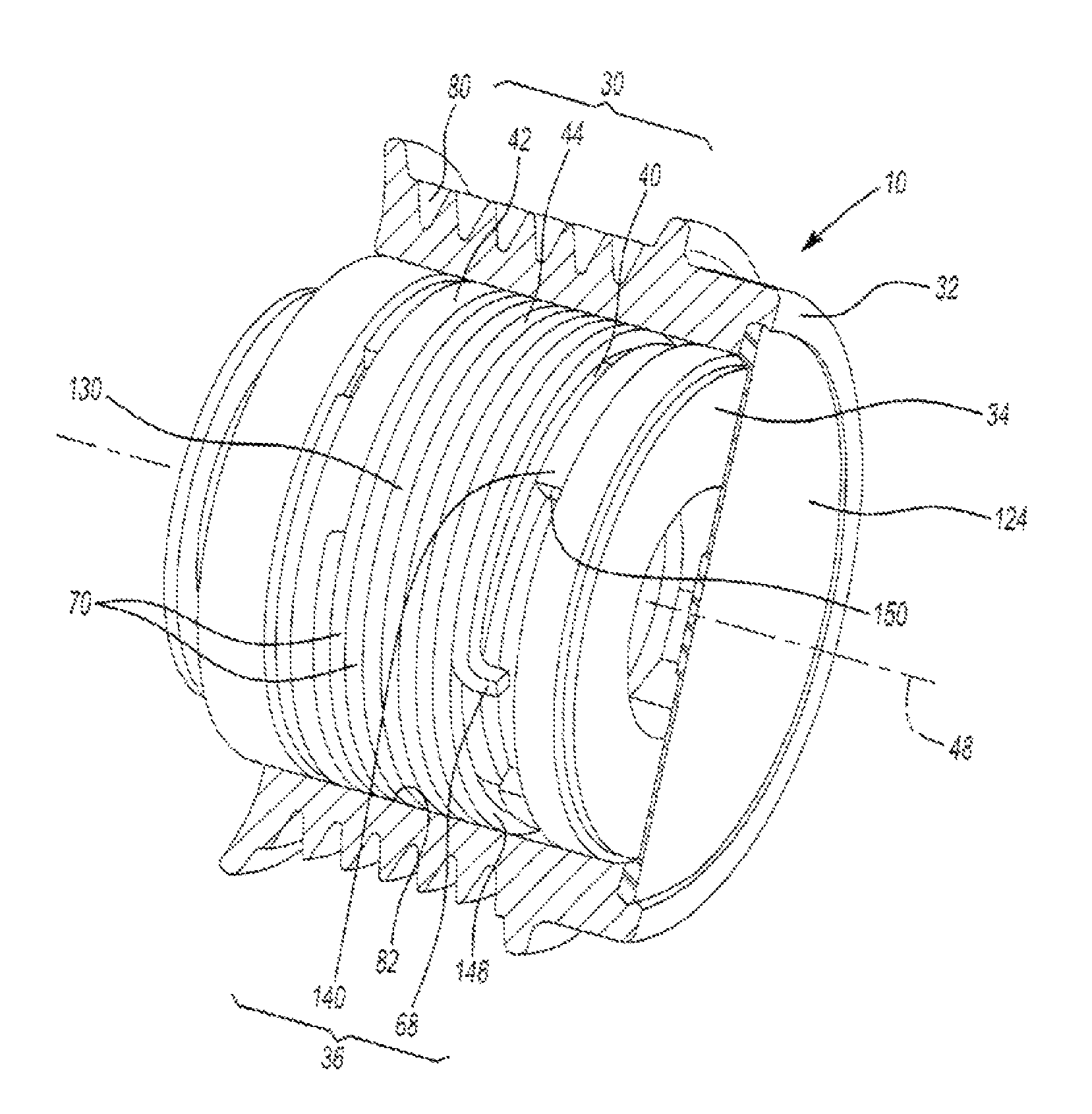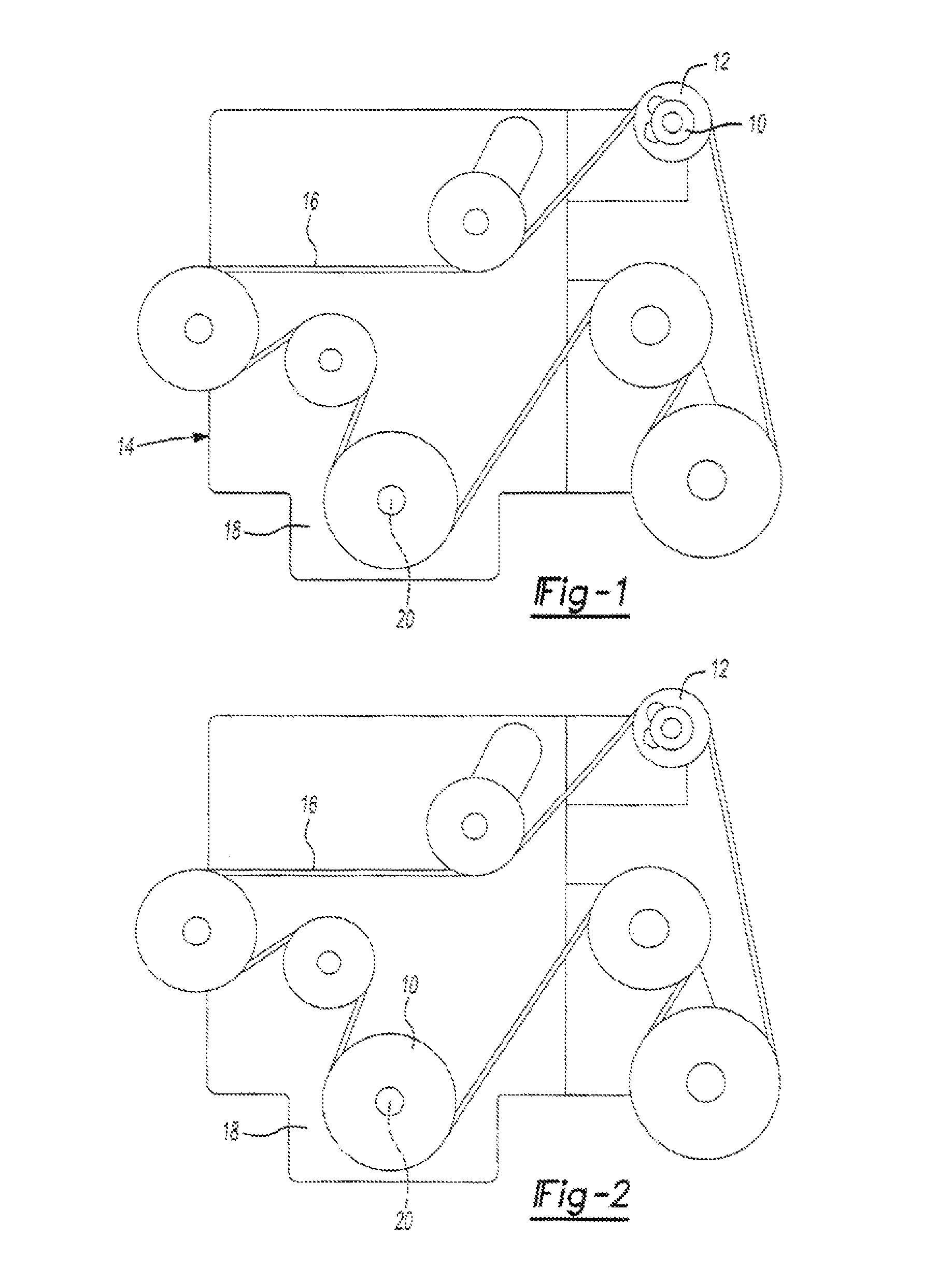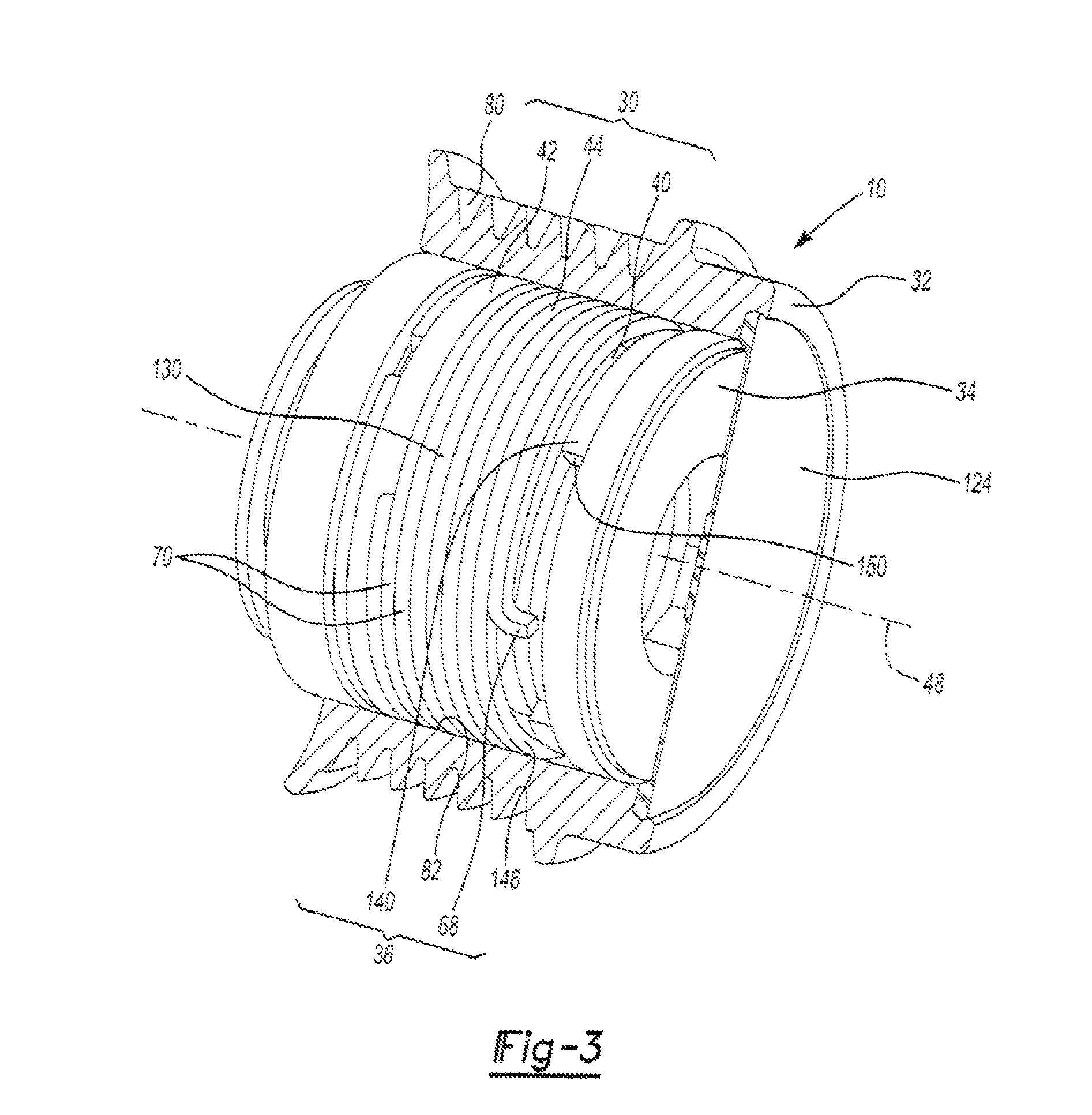Over-running decoupler with torque limiter
a technology of torque limiter and over-running decoupler, which is applied in the direction of slip coupling, gearing, hoisting equipment, etc., can solve the problems of significant reduction of the operating life of the over-running decoupler, and achieve the effect of preventing resonance and reducing fatigue li
- Summary
- Abstract
- Description
- Claims
- Application Information
AI Technical Summary
Benefits of technology
Problems solved by technology
Method used
Image
Examples
Embodiment Construction
[0022]With reference to FIG. 1 of the drawings, an over-running decoupler constructed in accordance with the teachings of the present disclosure is generally indicated by reference numeral 10. The particular over-running decoupler 10 illustrated is particularly suited for use with a driven device 12, such as an alternator or a supercharger, in a drive system 14 that employs an endless power transmitting element 16, such as a belt or a chain, from a source of rotary power 18, such as an engine or a transmission. Those of skill in the art will appreciate that the over-running decoupler 10 could be configured for use in another type of drive system (e.g., a drive system employing gears) and / or that the over-running decoupler 10 could be employed to transmit rotary power from a drive shaft 20 into the drive system as shown in FIG. 2. Accordingly, it will be appreciated that the teachings of the present disclosure have application in a crankshaft decoupler, similar to those which are dis...
PUM
| Property | Measurement | Unit |
|---|---|---|
| rotary power | aaaaa | aaaaa |
| torque | aaaaa | aaaaa |
| peak drive torque | aaaaa | aaaaa |
Abstract
Description
Claims
Application Information
 Login to View More
Login to View More - R&D
- Intellectual Property
- Life Sciences
- Materials
- Tech Scout
- Unparalleled Data Quality
- Higher Quality Content
- 60% Fewer Hallucinations
Browse by: Latest US Patents, China's latest patents, Technical Efficacy Thesaurus, Application Domain, Technology Topic, Popular Technical Reports.
© 2025 PatSnap. All rights reserved.Legal|Privacy policy|Modern Slavery Act Transparency Statement|Sitemap|About US| Contact US: help@patsnap.com



